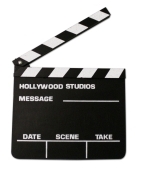
Image thanks to Rohan Baumann
When you’re writing copy for your website should you write simply and plainly? Or is it better to show off your mastery of industry jargon and use plenty of insider buzzwords?
In response to a post about writing great headlines, Zachariah wanted to know if you wrote a song, and couldn’t think of a title, would it be better to call it something like “greatest song ever” or give it a title that was more eloquent? Would that stand out more than a title that’s easy to read?
Should you show off your writing skills on your website?
It’s an easy trap, especially if you’re a writer and have a large vocabulary. You want to show off all those big words you worked so very hard to learn. All of them. From antidisestablishmentarianism to syzygy (that’s when three celestial objects are aligned) and Zoroastrian.
Adapt to your audience
For one thing, it’s best not to talk to surfers the way you’d talk to brain surgeons. “Dude, that’s one gnarly aneurysm.”
However, even if your audience is brain surgeons, they’re still people. Your headline and the words you use have to be easy to grasp and digest quickly.
Using long words or jargon or even puns, can make it harder for your readers to understand what you’re saying. If they can’t understand you, they won’t keep reading. Instead, they’ll leave your landing page or your website and go look elsewhere for the information they want.
Speak to them directly
Don’t make it about you and your company. Talk to your audience. Use words such as “you” and ‘your” more than you use words like “we” and “our.” Use a conversational tone (generally), and show sympathy for their problems.
Keep it simple
Going back to Zach’s imaginary song, it will get more listeners with a title like “I Gotta Be Me!” than it would with a name such as “Melodic Ruminations on a Theme of Personal Development and Growth.”
Make it easy as ABC, 1-2-3. Even if it’s hard. Reading it aloud can help. If it’s hard to say, it’s probably hard to read. Try it on a child. If she doesn’t understand you, go back to the drawing board.
What website copywriting tips do you have for keeping things simple? How do you overcome the “curse” of a large vocabulary?

 We’d all like to get more orders from our Web sites.
We’d all like to get more orders from our Web sites. It’s easy to get distracted by the latest bright and shiny technology. We gawp at Buzzfeed, get entranced by SnapChat, and twitter away hours on social media. But sometimes, the best way to advertise isn’t the latest idea, but one of the oldest. Personalization has been used in direct marketing since the last century, but it still works (both online and off).
It’s easy to get distracted by the latest bright and shiny technology. We gawp at Buzzfeed, get entranced by SnapChat, and twitter away hours on social media. But sometimes, the best way to advertise isn’t the latest idea, but one of the oldest. Personalization has been used in direct marketing since the last century, but it still works (both online and off).
